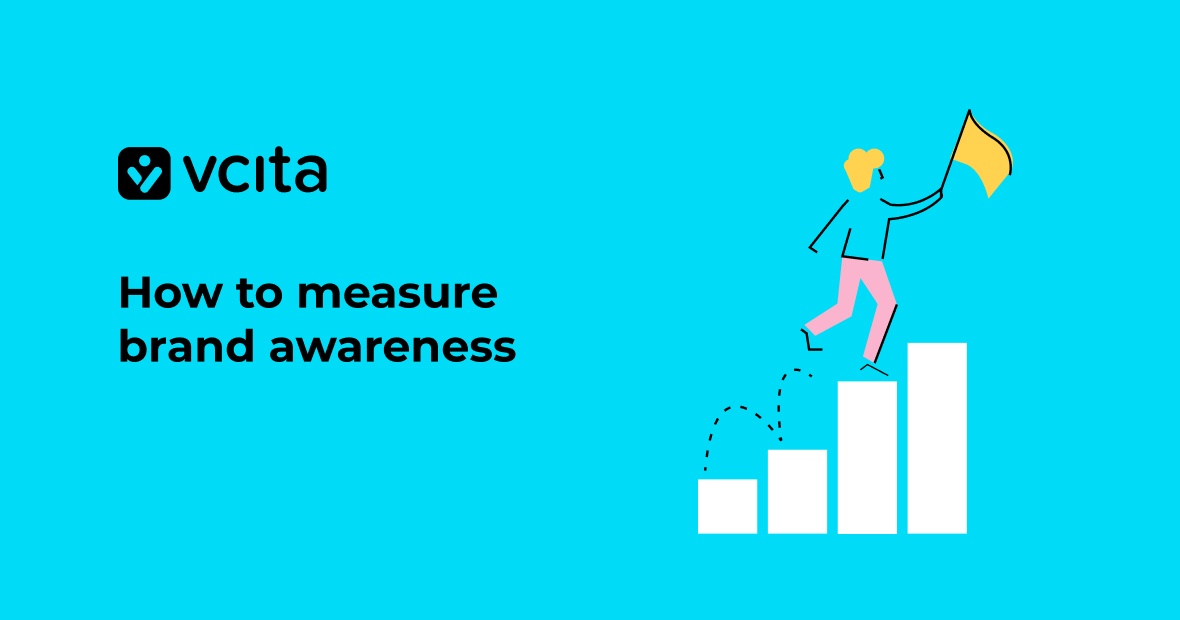You’re putting plenty of effort into marketing your small business, but are you unsure if it’s actually paying off? Measuring brand awareness and recognition is key to ensuring your marketing efforts are effective and worth the investment.
Stop guessing about the impact of your marketing strategies and wondering which channels are the most effective. There are several free or low-cost ways to gauge how well you’re building brand awareness and increasing brand recognition among your target audience. Read on to learn how to implement them and what to do with the results.
What is brand awareness and why does it matter?
Brand awareness means how familiar your target audience is with your brand. It’s measured by the number of people who know about your company and recognize your brand. It’s important, because when more people are aware of and familiar with your brand, they are more likely to become customers.
Brand awareness campaigns are tactics you use to measure the level of brand awareness among your potential. The results of these brand awareness campaigns and metrics may surprise you – and hopefully delight you. But at least you’ll know if all that time, money and effort you’ve been putting into marketing is actually moving the needle and resonating with your customers. If not, at least you’ll have the insights to make changes to better reach your target audience.
7 key metrics to measure brand awareness and recognition
There are several ways to gauge your brand awareness campaigns and see if your marketing efforts are working. The primary strategy is to set goals for key metrics, and track them over time. Some of the main metrics include:
- Website traffic. See how many people are visiting your website, which indicates growing interest in your brand. Google Analytics shows you data and trends.
- Brand awareness surveys. Survey your target audience to determine their familiarity with your brand. Repeat surveys regularly to see if brand recognition increases over time.
- Social media engagement. See how many people are interacting with your social media profiles by liking, commenting and sharing posts. More engagement means more awareness and interest in your brand.
- Branded search volume. Use a tool like Google Trends to monitor how many people are searching for your brand name, branded products and services, and top keywords on search engines. Increasing volume means higher awareness.
- Mentions of your brand. Track how often your brand is mentioned on social media, news sites, blogs and forums. More mentions reflect greater brand awareness.
- Share of voice. Compare how much your brand is being talked about online versus your competitors. A higher share of voice means you have greater brand awareness.
- Pathways to your site. Use Google Analytics to see how people reach your site, like whether they arrive directly by typing your URL, search for your business name, or search for one of your business keywords. Direct traffic is a sign of higher brand recall.
By consistently measuring these key metrics, you’ll know if your efforts to build brand awareness and increase brand recognition with your target audience are working. Make adjustments as needed to your marketing campaigns and brand awareness strategies to keep improving. The higher your brand awareness, the more customers you’ll gain and the faster your business will grow.
Using surveys to gauge brand awareness
A brand awareness survey is designed specifically for measuring how aware your customers are about your brand. It’s one of the best ways to measure brand awareness, because it provides quantifiable data directly from your target audience. Here are some tips about conducting a survey and then analyzing the results to gain actionable insights.
How to conduct a brand awareness survey
To conduct a survey, you’ll need to identify your target audience and determine the best way to reach them, whether that’s through email, social media, or another channel. Keep your survey concise, around 5 to 10 questions, so people will actually complete it.
Ask questions like:
- Have you heard of [brand name]?
- What words come to mind when you think of [brand name]?
- How familiar are you with [brand name]’s products or services?
Analyzing the Results
Once you have the survey results, analyze them to identify any gaps in brand awareness and determine ways to strengthen your brand. If few people recognize your brand name or know what you offer, focus on creating brand awareness through social media, content marketing, advertising, and word-of-mouth.
Track key metrics such as the percentage of people who recognize your brand name and logo, know your product or service offerings, and can describe your brand positioning or personality. Measure the impact of your efforts by conducting follow-up surveys to see if brand recall, share of voice, branded search volume, and social media engagement increase over time.
Compare the results over time to see if your brand awareness campaigns and other marketing efforts are effective at building brand recognition and increasing brand awareness within your target audience.
Monitoring social media and website traffic
Monitoring the metrics around your brand awareness campaigns and website traffic is key to measuring their effectiveness. Two of the best tools for this are Google Analytics, and your social media analytics.
Monitoring brand awareness with Google Analytics
Google Analytics is a free tool that lets you see how people find and use your website. You can use it to track traffic from social media, see which posts are driving the most traffic, and find out how long people are staying on your site. Some key metrics to monitor include:
- Website traffic (number of people visiting your site)
- Traffic sources (social media, search engines, direct traffic)
- Bounce rate (how many people leave your site after viewing one page)
- Time on page
Create UTM codes for your social media posts and ads. This allows you to track traffic from each campaign and see which are most effective at driving people to your website.
Tracking brand awareness with social media analytics
Most social platforms like Facebook, Instagram and Twitter offer built-in analytics to help you track the success of your brand awareness campaigns. Look for metrics like:
- Impressions (number of people who saw your post)
- Engagement (likes, comments, shares)
- Traffic (how many people clicked from social to your website)
- Mentions (how many people mentioned or tagged your brand)
Compare metrics before, during and after a campaign to see the impact. Look for an increase in website traffic, social media followers and brand mentions. See which posts resonated most with your target audience. Then double down on what’s working!
Using a combination of Google Analytics, social media analytics and UTM codes gives you a powerful way to measure your success at building brand awareness, so you can make data-driven decisions to improve your marketing efforts.
Continuously improving your brand awareness campaigns
Once you’ve launched your initial brand awareness campaign, it’s important to continuously monitor and improve it. Measuring your efforts is key to increasing brand awareness over time. You need to:
- Track website traffic and social media engagement to see changes in how people are interacting with your brand. Look for upward trends which indicate your campaigns are working.
- Conduct brand awareness surveys at regular intervals to see if mentions of your brand and knowledge about what you offer are increasing
- Monitor branded search volume on search engines like Google to determine if search volume for your branded terms is rising over weeks and months.
Use this data to make ongoing improvements, and constantly tweak your marketing efforts and refine your approach to spread brand awareness to more of your target audience. You might increase your social media posting frequency, run retargeting ad campaigns, or revamp your website content., or try new tactics like podcast sponsorships, online video, or email marketing.
Brand awareness monitoring is marketing’s secret sauce
By regularly tracking key metrics like website traffic, brand awareness surveys, social media engagement, and branded search volume, you’ll gain valuable insights into how many people in your target audience are aware of and recognize your brand. While it can take time to increase brand awareness and boost metrics like share of voice and brand recall, with the right marketing strategies focused on your target audience, you’ll be well on your way to building a recognizable and memorable brand.




























